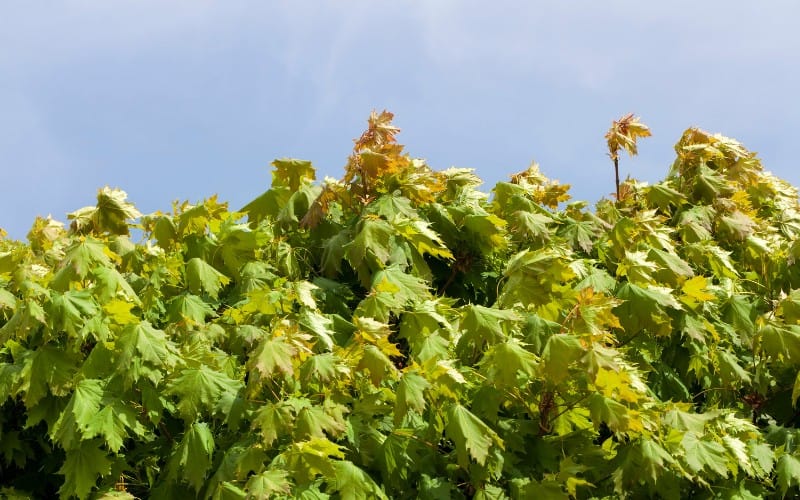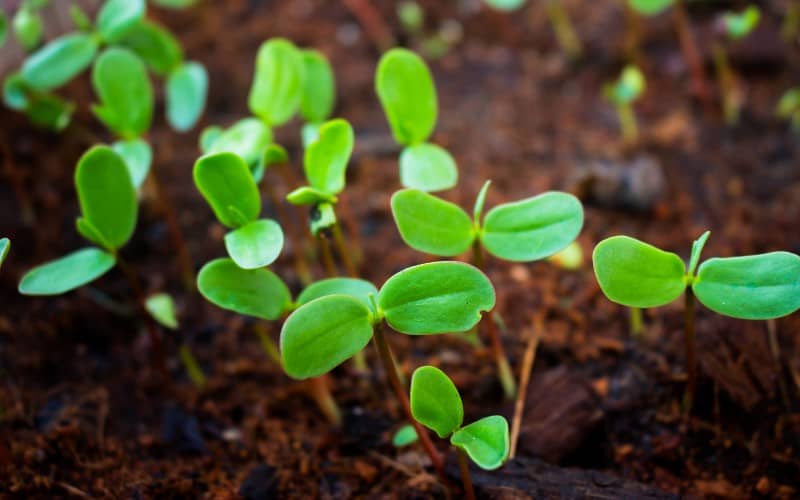Cell division is the major reason for plant growth. Depending on where these cell divisions take place and the direction of growth, we can classify plant growth into primary and secondary growth.
When trying to understand the difference between primary and secondary growth, it is important to consider determinate and indeterminate growth.
Determinate growth stops when the elements of the plant reach a particular size, while indeterminate growth occurs continuously throughout the lifetime of the plant.
Most plants are associated with intermediate growth because a typical plant will keep growing by experiencing either primary growth or secondary growth.
While there are many differences between primary vs secondary growth, the major difference is that primary growth initiates an increase in the length of the plant. On the other hand, secondary growth increases thickness.
Table of Contents
What Is Primary Growth?

Almost all plants except for hibiscus plants go through primary growth. Primary growth is the increase in the length of the stem and root. It occurs as a result of cell division that occurs in the apical meristem.
So what does this mean?
The apical meristem means that this growth occurs at the apices of shoots and roots. After cell division occurs, the resulting cells are elongated and cell differentiation sets in. Differentiation is when cell changes to their specialized type.
These cells are differentiated into the protoderm, ground meristem, and procambium which produce epidermis, ground tissue, and vascular bundles respectively.
There is an important phenomenon in primary growth that is of importance to every gardener. It is known as apical dominance. It makes the main, central stem of the plant dominant over other sides of the stem. So the main stem grows at the expense of other parts.
Cutting off of the apical meristem of a plant gives a bushy shape to the plant. This knowledge is used by gardeners to make their plants bushy by pruning.
Primary growth occurs in the stem of the plant, so also, the root experiences growth in the same manner. Primary growth in the root takes place in the root apical meristem.
The growth of the stem helps the plant absorb sunlight efficiently. The depth of the root allows the plant to absorb water efficiently.
What Is Secondary Growth?
A plant cannot just keep growing in length without experiencing the thickness of the stem. Secondary growth helps the plant gain stamina and support for the height.
Secondary growth is the increase in the thickness of the shoot and root.
While all plant experiences primary growth, not all experience secondary growth. For example, herbaceous plants and palm plants only experience primary growth.
The thickness of the palm is due to the failure of the branches to fall off the stem when it shed its leaves. Accumulation of the base of these branches is what results in the thickness of the palm stem.
Herbaceous plants stop growing when their primary tissue matures.
Secondary growth occurs due to activities of the lateral meristem.
the cork cambium and vascular cambium are the two meristems associated with a lateral meristem that gives rise to secondary growth. As long as cell division continues to take place, the stem or root will continue to grow in diameter.
In woody plants, this process results in the formation of wood and shaping the plant into a tree with a thickened trunk.
Differences Between Primary And Secondary Growth
Tabulating some of the major differences in a tabular form will help you understand better:
Primary Growth | Secondary Growth |
Cell division takes place in the apical meristem | Cell division occurs in the lateral meristem |
Growth leads to an increase in the height of the plant’s stem and root | Growth leads to the radial growth of the stem and root |
Primary growth occurs at the beginning of the plant’s growth | Secondary growth occurs after primary growth |
Occurs in all parts of the plant | Occurs at the Angiosperm and gymnosperm |
Primary xylem is formed by the primary growth of the procambium | Secondary xylem is formed by the secondary growth of the vascular cambium |
During primary growth, the primary vascular tissues, epidermis, cortex are developed | During secondary growth, the bark, periderm, lenticels, secondary phloem, and xylem develops |
Conclusion
As a gardener, it is important to understand the different types of growth in plants and also be able to differentiate them even if you do not have a full understanding of the biological events.
At every stage of your plant growth, you know exactly what is happening and what you should do to make your plant healthy.
There are also different stages of plant growth, and each stage requires special nutritional requirements for the plant to thrive. All these bits of knowledge are important for an average gardener.
In summary, the major physical difference between primary and secondary growth in plants is the direction of growth.





